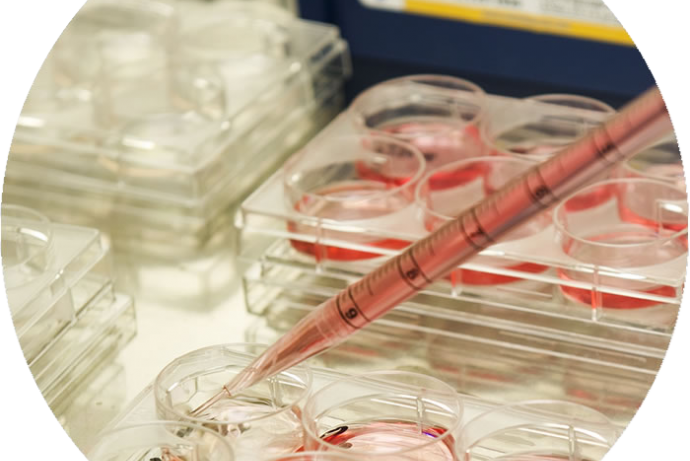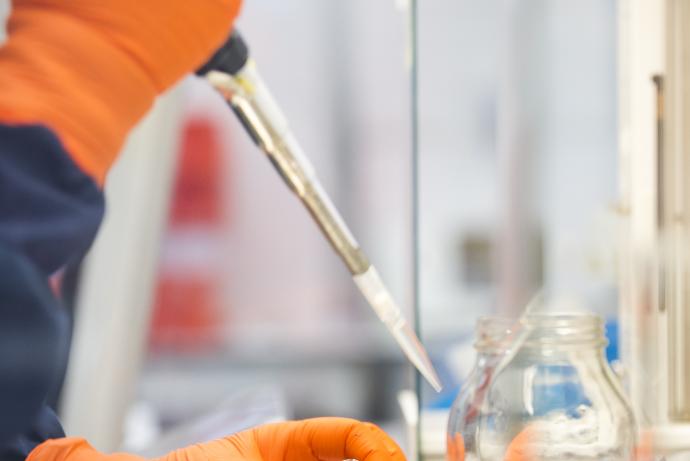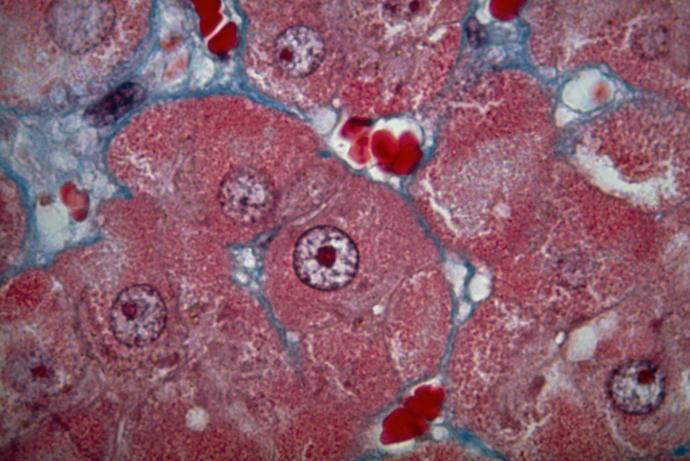Toxicokinetic and toxicodynamic modelling can successfully predict toxic effects of chemicals on fish growth. Now the researchers want to apply the approach to predict toxic effects in relevant small mammal species (rats, mice). The model will be calibrated using data generated in in vitro toxicity tests with cultured mammalian cells and has the potential to replace toxicity tests in small mammals. The researchers have extensive expertise in modelling, and access to existing in vivo toxicity data via a collaborator to test the approach for small mammals. Partners are sought with the expertise and facilities to carry out the in vitro toxicity tests with cultured mammalian cells.
Currently the effects of substances on mammalian growth are tested in repeated dose studies (OECD 407 and OECD 408) with rodents (OECD Publishing, 2008; OECD Publishing, 1998). In these chronic toxicity studies, lasting 28 days or 90 days, the changes in body weight are only one endpoint measured amongst many. However, to replace these chronic animal toxicity tests requires the ability to predict effects on growth via alternative methods.
Researchers at the University of York have previously demonstrated that the fish toxicity test using growth as an endpoint can be replaced by a combination of toxicokinetic-toxicodynamic modelling and in vitro tests with cell cultures (Stadnicka-Michalak et al., 2015). The model requires only in vitro data for calibration and can predict reduced growth caused by synthetic chemicals (e.g. pesticides). This is a promising step towards replacement of chronic toxicity testing with a suite of in vitro tests. In addition, the model has a potential role for in vitro screening to detect effects on growth early in the drug or pesticide development pipeline, reducing the number of chemicals entering subsequent regulatory in vivo studies. However, despite these methods being available to replace fish toxicity testing, there are currently no methods to predict chemical effects on mammalian growth in vivo based on in vitro studies.
References
- OECD. Test No. 408: Repeated Dose 90-Day Oral Toxicity Study in Rodents. Paris: OECD Publishing; 1998.
- OECD. Test No. 407: Repeated Dose 28-day Oral Toxicity Study in Rodents. Paris: OECD Publishing; 2008.
- Stadnicka-Michalak J, Schirmer K, Ashauer R (2015).Toxicology across scales: Cell population growth in vitro predicts reduced fish growth. Science Advances 1(7): e1500302. doi: 10.1126/sciadv.1500302
In a project starting October 2016, researchers at the University of York will adapt their fish toxicokinetic-toxicodynamic modelling approach to suit small mammals. This solution is unique in that it uses toxicokinetic modelling to compare exposures based on internal cell concentrations (in vitro, in vivo). Internal cell concentrations enable comparison of concentrations at the target sites, in vitro and in vivo, as opposed to concentrations in the test media and systemic concentrations. Furthermore a fairly simple yet representative toxicodynamic model is used to simulate effects on growth in vivo. This toxicodynamic model is calibrated with the in vitro data, where the cell population growth is taken as a proxy for organism growth.
The researchers want to test the model-based in vitro to in vivo toxicity extrapolation for a number of pesticides, but in order to do so they need to generate in vitro toxicity data with cultured mammalian cells in studies designed specifically for the proposed toxicokinetic-toxicodynamic modelling. The details of the mammalian in vitro testing (e.g. cell type) would need to be developed in collaboration, but parts of the testing protocol can be adopted from the fish study.
This Solution can be used to screen pesticides or other chemicals for effects on growth. This is relevant for drug testing and chemical safety testing in general (including REACH) (Regulation (EC) No 1907/2006 of the European Parliament and of the Council 18 December 2006). The researchers are initially most interested in environmental safety testing of pesticides, and in particular effects on growth in small mammals, but the approach could be translated to other endpoints, chemicals and organisms.
Reference
- Regulation (EC) No 1907/2006 of the European Parliament and of the Council of 18 December 2006 concerning the Registration, Evaluation, Authorisation and Restriction of Chemicals (REACH), establishing a European Chemicals Agency, amending Directive 1999/45/EC and repealing Council Regulation (EEC) No 793/93 and Commission Regulation (EC) No 1488/94 as well as Council Directive 76/769/EEC and Commission Directives 91/155/EEC, 93/67/EEC, 93/105/EC and 2000/21/EC.
The researchers’ expertise is in toxicokinetic-toxicodynamic modelling, ecotoxicity and environmental risk assessment. They are looking for a partner with expertise in mammalian cell culture and toxicity testing, and the facilities to carry out the required experiments. The researchers have a BBSRC industrial CASE project starting in October 2016 to work on this topic, which includes access to expertise and data from their industrial partner including results from in vivo toxicity studies with pesticides tested in rats and mice. Furthermore, the PhD student will have time to carry out experiments with cultured cells in the labs of the cell toxicity partner.
The ideal partner should have facilities to carry out toxicity tests with pesticides, including analytical facilities (ideally 14C labelled) and the corresponding expertise to train the PhD student and develop the required testing protocols in collaboration. The partner should also maintain or regularly use a range of mammalian cell cultures so that the most suitable one(s) can be selected.
The partner will join an innovative and strong project consortium. This is an opportunity to be part of a novel approach to in vitro-in vivo toxicity extrapolation which focuses on mammalian chronic toxicity, one of the most important endpoints in chemical development across bioscience industries. The new method will be of interest to many industries, including industrial chemicals, pesticides and pharmaceuticals.
Information about IP
There are no IP issues related to the solution, but the existing in vivo toxicity studies for testing the approach are owned by the industrial partner. The researchers at the University of York are open to discuss how future IP will be shared.
This model will enable chemicals to be screened for effects on growth at early stages of the development pipeline so that fewer substances would enter regulatory animal toxicity studies. Further, it could be used to aid dose setting for in vivo toxicity studies, especially repeated dose toxicity (OECD 407, 408) for which 40,000 mice and rats are used in Great Britain every year (OECD Publishing, 2008; OECD Publishing, 1998; House of Commons, 2015.).
Finally, it could form part of a suite of in vitro tests that replace chronic toxicity tests with rodents (OECD 407, 408). Chemical effects on growth and changes in weight are only one of the endpoints assessed in these studies (histopathology, clinical observations, sensory activity and others). Replacing and reducing these chronic toxicity tests will likely involve batteries of in vitro tests measuring large numbers of variables. This approach, forming part of such a battery of in vitro tests, therefore has potential to contribute to a reduction in the numbers of rats and mice used for chronic toxicity testing in the long-term.
References
- Home Office. Annual Statistics of Scientific Procedures on Living Animals Great Britain 2014. House of Commons. 2015.
- OECD. Test No. 408: Repeated Dose 90-Day Oral Toxicity Study in Rodents. Paris: OECD Publishing; 1998.
- OECD. Test No. 407: Repeated Dose 28-day Oral Toxicity Study in Rodents. Paris: OECD Publishing; 2008.


